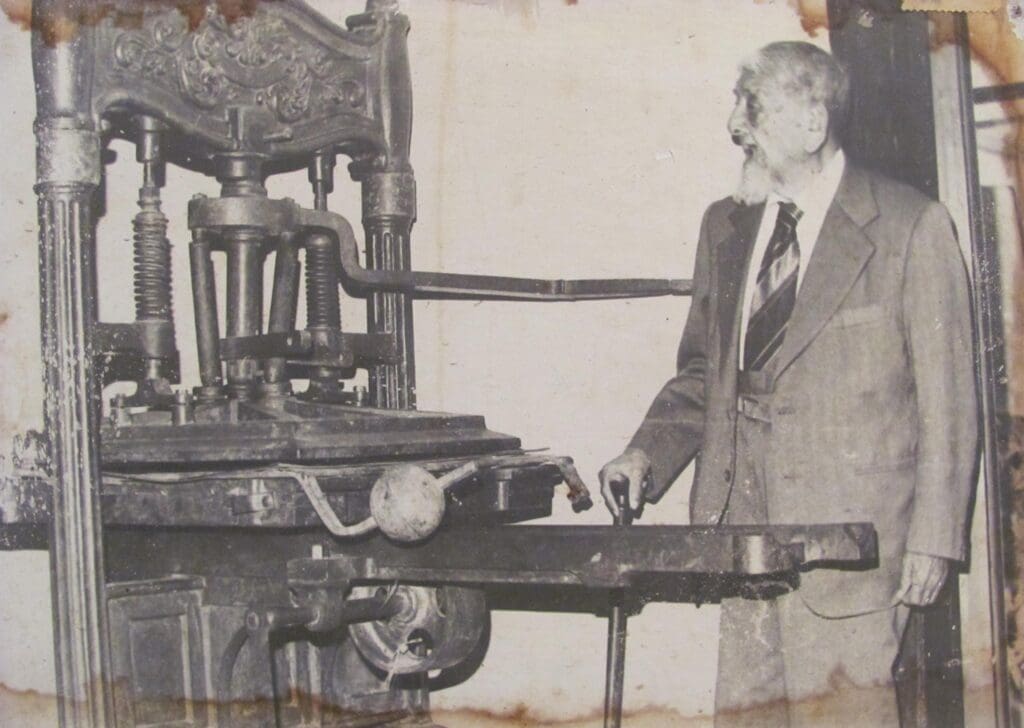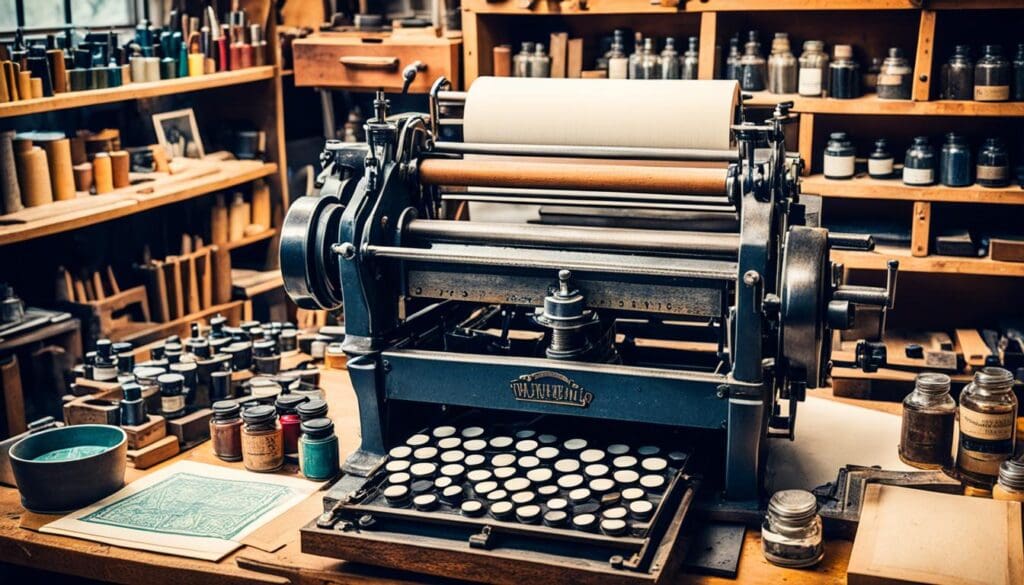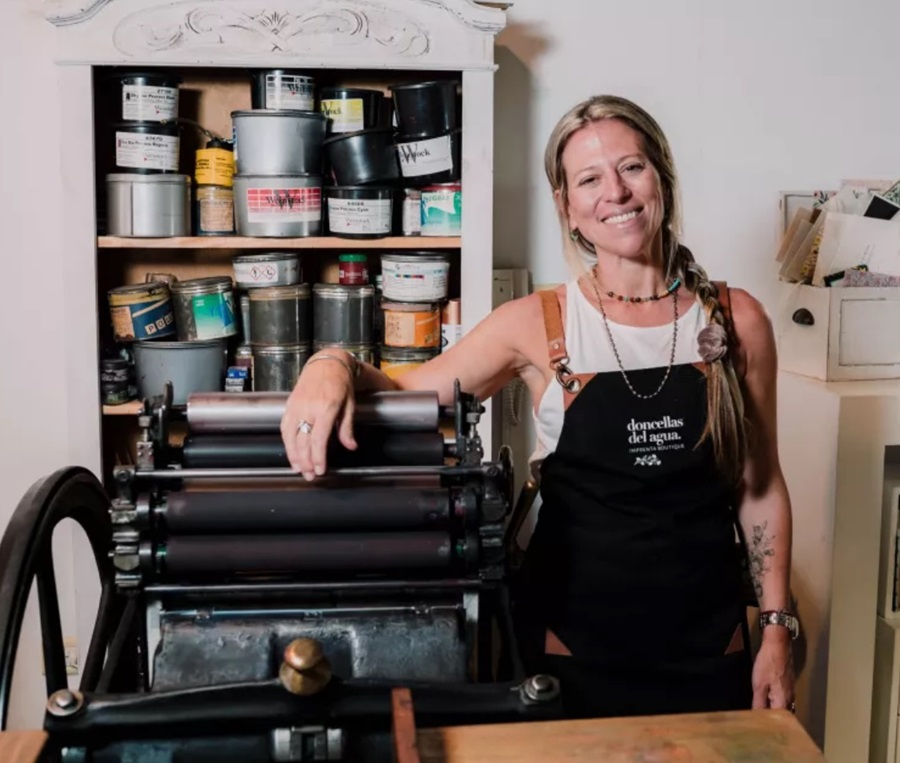Ever wondered how printing was done before digital presses took over? Argentine letterpress printing has a fascinating history that dates back to the early 20th century, when printing presses first arrived in the country. This traditional printing method quickly became essential to Argentina’s commercial printing industry, cherished for its precision and the beautiful, tactile results it produced. You might have heard of the iconic Heidelberg Windmill or the Vandercook press—these vintage machines were the backbone of letterpress printing in Argentina, valued for their craftsmanship and ability to create high-quality prints.
What Makes Letterpress Printing Special?
If you’ve ever held a piece of letterpress work in your hands, you know there’s something uniquely charming about it. Unlike modern digital prints, letterpress printing involves pressing inked type into paper, creating a textured, three-dimensional impression that you can see and feel. It’s not just printing; it’s an art form. And in Argentina, this craft has been preserved and cherished over the decades.
| Traditional Printing Techniques | Vintage Printing Presses |
|---|---|
| Letterpress involves using movable type and hand-operated presses to transfer ink onto paper. | The Heidelberg Windmill and Vandercook press are legendary machines used widely in Argentina for their precision. |
| It emphasizes the tactile beauty of prints, adding an artisanal charm to modern designs. | These presses are known for producing durable, high-quality prints that stand the test of time. |

The Art of Argentine Letterpress Printing
Let’s take a closer look at how this craft is done. The process starts with the careful arrangement of movable type. Imagine placing each individual letter by hand to form words and sentences—this meticulous work showcases the artistry involved in letterpress printing. Once the type is set, it’s inked by hand, ensuring each letter is evenly coated. This might sound simple, but it requires a sharp eye and a steady hand because any inconsistency can affect the final print.
Then comes the magic moment: the inked type is placed on a hand-operated press, and with deliberate pressure, the ink is transferred onto the paper. The result? A raised, tactile impression that gives each letterpress print its unique charm. It’s a process that demands patience, precision, and a deep respect for the craft.
Why Argentine Letterpress Prints Stand Out
So, what makes Argentine letterpress prints so special? It’s all in the details. These prints have a distinct tactile quality—you can actually feel the impression left by the press. Combined with premium-quality paper and carefully selected inks, these prints exude a richness and depth that digital prints just can’t match. Each print is unique, with slight variations that add to its authenticity and charm.
| Characteristics | Description |
|---|---|
| Tactile Impression | The process creates a raised, three-dimensional effect that’s as pleasing to touch as it is to look at. |
| Premium Quality Paper | High-grade paper is used to enhance the durability and visual appeal of the prints. |
| Carefully Selected Inks | Inks are chosen for their richness, adding depth and fine detail to each print. |
| Unique Artistry | The handcrafted nature ensures that no two prints are exactly alike, making each one a work of art. |

The Modern Revival: Blending Tradition with Innovation
In recent years, there’s been a resurgence of interest in letterpress printing in Argentina. Even in the age of digital technology, designers and artists are drawn to the tactile, handmade qualities that letterpress offers. It’s a way to add a personal, artisanal touch to modern design projects. Many creators now combine letterpress with other techniques to produce innovative, visually striking results.
What’s driving this revival? It’s partly a response to the impersonal nature of digital prints. People crave something more tangible, more connected to tradition. By incorporating letterpress into modern designs, artists are preserving the essence of this age-old craft while embracing contemporary aesthetics.
The Role of Argentine Letterpress in Modern Design
Letterpress printing isn’t just a throwback—it’s a vital part of modern design in Argentina. Here’s why:
- Tactile Experience: The raised impressions give the final product a texture and depth that’s impossible to achieve with flat digital prints. It’s something you can feel as well as see.
- Aesthetic Appeal: There’s a timeless beauty to letterpress prints. The slight inconsistencies and variations give each piece a unique, organic look that’s hard to replicate.
- Attention to Detail: Every step, from selecting the typeface to applying the ink, requires meticulous care. This level of detail is what makes letterpress prints stand out in today’s market.
Designers and artists are using these qualities to create memorable, impactful pieces—whether it’s a wedding invitation, a business card, or an art print. Letterpress adds a level of sophistication and craftsmanship that simply can’t be matched by digital methods.
Keeping the Tradition Alive: The Importance of Preservation
As digital printing continues to dominate the industry, there’s a real need to preserve the traditional techniques of letterpress printing. In Argentina, a dedicated community of artisans is doing just that. They’re restoring vintage presses, teaching the craft to new generations, and ensuring that this art form isn’t lost to time.
By keeping these techniques alive, they’re not just preserving a method of printing—they’re preserving a piece of cultural heritage. The passion and dedication of these artisans ensure that letterpress printing remains a vibrant part of Argentina’s artistic landscape.
Exploring Argentine Letterpress: Where to Learn and Experience
If you’re curious about letterpress printing, Argentina is the perfect place to explore this craft. There are workshops, studios, and exhibitions across the country where you can see letterpress in action. You’ll have the chance to engage with skilled artisans, learn about the history of the craft, and even try your hand at creating your own print.
Whether you’re a designer looking for inspiration or simply an enthusiast of traditional crafts, a visit to one of these studios offers a unique opportunity to connect with Argentina’s rich printing heritage.
START YOUR SPANISH CLASSES TODAY

Maria Olson
At VAMOS Academy, I craft stories sprinkled with my love for exploration and food. Whether it’s the tang of a local dish or the rhythm of a new dialect, I bring these experiences to you. Ready for an adventure that tickles your taste buds and ignites your wanderlust? Let’s embark on this journey together, one story and one bite at a time.






